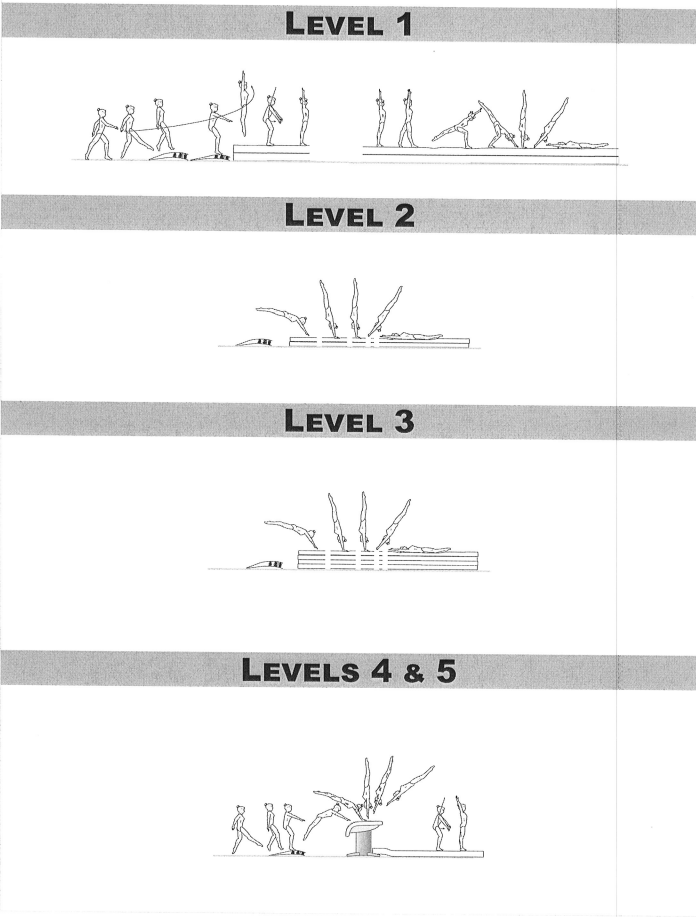The first vault taught in women’s gymnastics the kick to hand stand flat back is a great fundamental not just for vault but for each event in the sport. This skill teaches kids to quickly find the handstand line in a skill and hold onto that line through a drop. The ability to find the handstand line in a skill is an important part of gymnastics that will help each gymnast develop new skills to the best of their ability.
Common mistakes
With this skill being so fundamental it is important to correct mistakes early on to avoid frustration for the gymnast later on. For many young gymnasts it is common to see a rounding in the shoulders when falling to flat back; this can be difficult to correct as commonly it stems from a young gymnast being hesitant to “fall” in the skill. Correcting this can be done by making the gymnast feel more comfortable falling either by spotting or the addition of a softer mat.
Common mistakes such as failing to find the handstand line in the skill is something that happens to almost every gymnast at the beginning of this skill. Improper prep work on the handstand is usually the cause of this difficulty and simply working on the handstand by itself is incredibly beneficial. When working on the handstand line coaches should use various techniques and drills to help the student; teaching the gymnast to find the line but not teaching them to squeeze their muscles will not help the student apply this correction to the flatback itself. Having the student hold their handstand shape over a gap or falling to flat back over a gap is a great way to reinforce the tight handstand line.
As the flat back progresses into a front handspring it is important for the gymnast and coaches to think ten steps ahead and view the flatback landing as a front handspring. Instead of falling into a completely flat body shape the gymnast wants to achieve a hollow body shape with flat hips and rounded shoulders. Learning this shape early on will allow the gymnast to be able to block off the vault at the correct angle (above 45°), as well avoid arching in the exit shape. This shape and angle is not only important for vault but for a front handspring dismount on beam as well.
Vault skills build off of each other in a very literal sense, as seen in the image below, making it very important for coaches at the Preschool and Recreational levels to understand and be confident in teaching this skill to avoid ingrained bad habits in their students.


